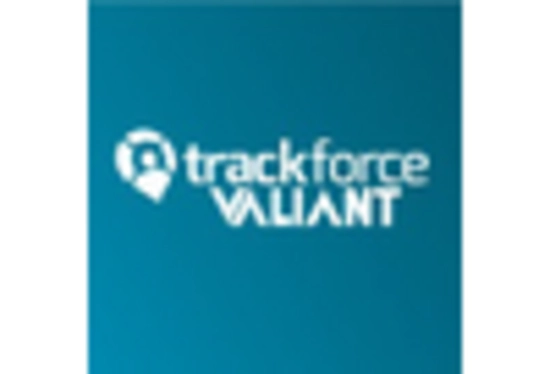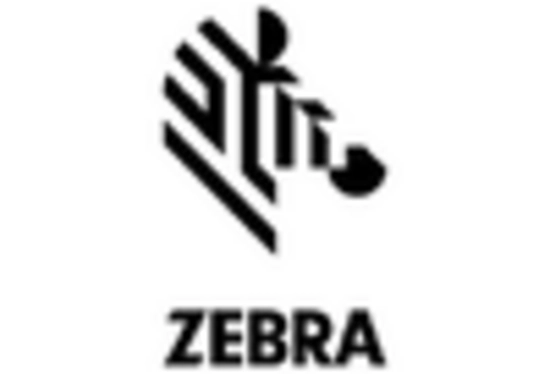-
MARKET INTRODUCTION
-
INTRODUCTION
-
SCOPE OF STUDY
- RESEARCH OBJECTIVE
- ASSUMPTIONS
- LIMITATIONS
-
MARKET STRUCTURE
-
RESEARCH METHODOLOGY
-
RESEARCH TYPE
-
PRIMARY RESEARCH
-
SECONDARY RESEARCH
-
FORECAST MODEL
- MARKET DATA COLLECTION, ANALYSIS & FORECAST
- MARKET SIZE ESTIMATION
-
MARKET DYNAMICS
-
INTRODUCTION
-
MARKET DRIVERS
-
MARKET CHALLENGES
-
MARKET OPPORTUNITIES
-
MARKET RESTRAINTS
-
EXECUTIVE SUMMARY
-
MARKET FACTOR ANALYSIS
-
PORTER’S FIVE FORCES ANALYSIS
-
SUPPLY CHAIN ANALYSIS
-
ASSET TRACKING SOFTWARE MARKET, BY SEGMENTS
-
INTRODUCTION
-
MARKET STATISTICS
- BY COMPONENT
- BY DEPLOYMENT
- BY ORGANIZATION SIZE
- BY VERTICAL
- BY GEOGRAPHY
-
COMPETITIVE ANALYSIS
-
MARKET SHARE ANALYSIS
-
COMPANY PROFILES
- ZEBRA TECHNOLOGIES CORPORATION (U.S.),
- STANLEY BLACK AND DECKER, INC. (U.S.)
- HONEYWELL INTERNATIONAL, INC. (U.S.)
- DATALOGIC S.P.A (ITALY)
- TRIMBLE INC. (U.S.)
- UBISENSE GROUP PLC. (U.K.)
- MOJIX, INC. (U.S.
- IMPINJ, INC. (U.S.)
- OTHERS
-
LIST OF TABLES
-
ASSET TRACKING SOFTWARE MARKET, BY COMPONENT
-
ASSET TRACKING SOFTWARE MARKET, BY DEPLOYMENT
-
ASSET TRACKING SOFTWARE MARKET, BY ORAGANIZATION SIZE
-
ASSET TRACKING SOFTWARE MARKET, BY VERTICAL
-
ASSET TRACKING SOFTWARE MARKET, BY REGION
-
NORTH AMERICA ASSET TRACKING SOFTWARE MARKET, BY COMPONENT
-
NORTH AMERICA ASSET TRACKING SOFTWARE MARKET, BY DEPLOYMENT
-
NORTH AMERICA ASSET TRACKING SOFTWARE MARKET, BY ORGANIZATION SIZE
-
NORTH AMERICA ASSET TRACKING SOFTWARE MARKET, BY VERTICAL
-
U.S. ASSET TRACKING SOFTWARE MARKET, BY COMPONENT
-
U.S. ASSET TRACKING SOFTWARE MARKET, BY DEPLOYMENT
-
U.S. ASSET TRACKING SOFTWARE MARKET, BY ORGANIZATION SIZE
-
U.S. ASSET TRACKING SOFTWARE MARKET, BY VERTICAL
-
CANADA ASSET TRACKING SOFTWARE MARKET, BY COMPONENT
-
CANADA ASSET TRACKING SOFTWARE MARKET, BY DEPLOYMENT
-
CANADA ASSET TRACKING SOFTWARE MARKET, BY ORGANIZATION SIZE
-
CANADA ASSET TRACKING SOFTWARE MARKET, BY VERTICAL
-
MEXICO ASSET TRACKING SOFTWARE MARKET, BY COMPONENT
-
MEXICO ASSET TRACKING SOFTWARE MARKET, BY DEPLOYMENT
-
MEXICO ASSET TRACKING SOFTWARE MARKET, BY ORGANIZATION SIZE
-
MEXICO ASSET TRACKING SOFTWARE MARKET, BY VERTICAL
-
EUROPE ASSET TRACKING SOFTWARE MARKET, BY COMPONENT
-
EUROPE ASSET TRACKING SOFTWARE MARKET, BY DEPLOYMENT
-
EUROPE ASSET TRACKING SOFTWARE MARKET, BY ORGANIZATION SIZE
-
EUROPE ASSET TRACKING SOFTWARE MARKET, BY VERTICAL
-
GERMANY ASSET TRACKING SOFTWARE MARKET, BY COMPONENT
-
GERMANY ASSET TRACKING SOFTWARE MARKET, BY DEPLOYMENT
-
GERMANY ASSET TRACKING SOFTWARE MARKET, BY ORGANIZATION SIZE
-
GERMANY ASSET TRACKING SOFTWARE MARKET, BY VERTICAL
-
FRANCE ASSET TRACKING SOFTWARE MARKET, BY COMPONENT
-
FRANCE ASSET TRACKING SOFTWARE MARKET, BY DEPLOYMENT
-
FRANCE ASSET TRACKING SOFTWARE MARKET, BY ORGANIZATION SIZE
-
FRANCE ASSET TRACKING SOFTWARE MARKET, BY VERTICAL
-
U.K. ASSET TRACKING SOFTWARE MARKET, BY COMPONENT
-
U.K. ASSET TRACKING SOFTWARE MARKET, BY DEPLOYMENT
-
U.K. ASSET TRACKING SOFTWARE MARKET, BY ORGANIZATION SIZE
-
U.K. ASSET TRACKING SOFTWARE MARKET, BY VERTICAL
-
ITALY ASSET TRACKING SOFTWARE MARKET, BY COMPONENT
-
ITALY ASSET TRACKING SOFTWARE MARKET, BY DEPLOYMENT
-
ITALY ASSET TRACKING SOFTWARE MARKET, BY ORGANIZATION SIZE
-
ITALY ASSET TRACKING SOFTWARE MARKET, BY VERTICAL
-
REST OF EUROPE ASSET TRACKING SOFTWARE MARKET, BY COMPONENT
-
REST OF EUROPE ASSET TRACKING SOFTWARE MARKET, BY DEPLOYMENT
-
REST OF EUROPE ASSET TRACKING SOFTWARE MARKET, BY ORGANIZATION SIZE
-
REST OF EUROPE ASSET TRACKING SOFTWARE MARKET, BY VERTICAL
-
ASIA-PACIFIC ASSET TRACKING SOFTWARE MARKET, BY COMPONENT
-
ASIA-PACIFIC ASSET TRACKING SOFTWARE MARKET, BY DEPLOYMENT
-
ASIA-PACIFIC ASSET TRACKING SOFTWARE MARKET, BY ORGANIZATION SIZE
-
ASIA-PACIFIC ASSET TRACKING SOFTWARE MARKET, BY VERTICAL
-
CHINA ASSET TRACKING SOFTWARE MARKET, BY COMPONENT
-
CHINA ASSET TRACKING SOFTWARE MARKET, BY DEPLOYMENT
-
CHINA ASSET TRACKING SOFTWARE MARKET, BY ORGANIZATION SIZE
-
CHINA ASSET TRACKING SOFTWARE MARKET, BY VERTICAL
-
JAPAN ASSET TRACKING SOFTWARE MARKET, BY COMPONENT
-
JAPAN ASSET TRACKING SOFTWARE MARKET, BY DEPLOYMENT
-
JAPAN ASSET TRACKING SOFTWARE MARKET, BY ORGANIZATION SIZE
-
JAPAN ASSET TRACKING SOFTWARE MARKET, BY VERTICAL
-
INDIA ASSET TRACKING SOFTWARE MARKET, BY COMPONENT
-
INDIA ASSET TRACKING SOFTWARE MARKET, BY DEPLOYMENT
-
INDIA ASSET TRACKING SOFTWARE MARKET, BY ORGANIZATION SIZE
-
INDIA ASSET TRACKING SOFTWARE MARKET, BY VERTICAL
-
SOUTH KOREA ASSET TRACKING SOFTWARE MARKET, BY COMPONENT
-
SOUTH KOREA ASSET TRACKING SOFTWARE MARKET, BY DEPLOYMENT
-
SOUTH KOREA ASSET TRACKING SOFTWARE MARKET, BY ORGANIZATION SIZE
-
SOUTH KOREA ASSET TRACKING SOFTWARE MARKET, BY VERTICAL
-
REST OF ASIA-PACIFIC ASSET TRACKING SOFTWARE MARKET, BY COMPONENT
-
REST OF ASIA-PACIFIC ASSET TRACKING SOFTWARE MARKET, BY DEPLOYMENT
-
REST OF ASIA-PACIFIC ASSET TRACKING SOFTWARE MARKET, BY ORGANIZATION SIZE
-
REST OF ASIA-PACIFIC ASSET TRACKING SOFTWARE MARKET, BY VERTICAL
-
REST OF THE WORLD ASSET TRACKING SOFTWARE MARKET, BY COMPONENT
-
REST OF THE WORLD ASSET TRACKING SOFTWARE MARKET, BY DEPLOYMENT
-
REST OF THE WORLD ASSET TRACKING SOFTWARE MARKET, BY ORGANIZATION SIZE
-
REST OF THE WORLD ASSET TRACKING SOFTWARE MARKET, BY VERTICAL
-
LIST OF FIGURES
-
RESEARCH COMPONENT
-
ASSET TRACKING SOFTWARE MARKET: BY COMPONENT (%)
-
ASSET TRACKING SOFTWARE MARKET: BY DEPLOYMENT (%)
-
ASSET TRACKING SOFTWARE MARKET: BY ORGANIZATION SIZE (%)
-
ASSET TRACKING SOFTWARE MARKET: BY VERTICAL (%)
-
NORTH AMERICA ASSET TRACKING SOFTWARE MARKET, BY COMPONENT (%)
-
NORTH AMERICA ASSET TRACKING SOFTWARE MARKET, BY DEPLOYMENT (%)
-
NORTH AMERICA ASSET TRACKING SOFTWARE MARKET, BY ORGANIZATION SIZE (%)
-
NORTH AMERICA ASSET TRACKING SOFTWARE MARKET, BY VERTICAL (%)
-
U.S. ASSET TRACKING SOFTWARE MARKET, BY COMPONENT (%)
-
U.S. ASSET TRACKING SOFTWARE MARKET, BY DEPLOYMENT (%)
-
U.S. ASSET TRACKING SOFTWARE MARKET, BY ORGANIZATION SIZE (%)
-
U.S. ASSET TRACKING SOFTWARE MARKET, BY VERTICAL (%)
-
CANADA ASSET TRACKING SOFTWARE MARKET, BY COMPONENT (%)
-
CANADA ASSET TRACKING SOFTWARE MARKET, BY DEPLOYMENT (%)
-
CANADA ASSET TRACKING SOFTWARE MARKET, BY ORGANIZATION SIZE (%)
-
CANADA ASSET TRACKING SOFTWARE MARKET, BY VERTICAL (%)
-
MEXICO ASSET TRACKING SOFTWARE MARKET, BY COMPONENT (%)
-
MEXICO ASSET TRACKING SOFTWARE MARKET, BY DEPLOYMENT (%)
-
MEXICO ASSET TRACKING SOFTWARE MARKET, BY ORGANIZTAION SIZE (%)
-
MEXICO ASSET TRACKING SOFTWARE MARKET, BY VERTICAL (%)
-
EUROPE ASSET TRACKING SOFTWARE MARKET, BY COMPONENT (%)
-
EUROPE ASSET TRACKING SOFTWARE MARKET, BY DEPLOYMENT (%)
-
EUROPE ASSET TRACKING SOFTWARE MARKET, BY ORGANIZATION SIZE (%)
-
EUROPE ASSET TRACKING SOFTWARE MARKET, BY VERTICAL (%)
-
GERMANY ASSET TRACKING SOFTWARE MARKET, BY COMPONENT (%)
-
GERMANY ASSET TRACKING SOFTWARE MARKET, BY DEPLOYMENT (%)
-
GERMANY ASSET TRACKING SOFTWARE MARKET, BY ORGANIZATION SIZE (%)
-
GERMANY ASSET TRACKING SOFTWARE MARKET, BY VERTICAL (%)
-
FRANCE ASSET TRACKING SOFTWARE MARKET, BY COMPONENT (%)
-
FRANCE ASSET TRACKING SOFTWARE MARKET, BY DEPLOYMENT (%)
-
FRANCE ASSET TRACKING SOFTWARE MARKET, BY ORGANIZATION SIZE (%)
-
FRANCE ASSET TRACKING SOFTWARE MARKET, BY VERTICAL (%)
-
U.K. ASSET TRACKING SOFTWARE MARKET, BY COMPONENT (%)
-
U.K. ASSET TRACKING SOFTWARE MARKET, BY DEPLOYMENT (%)
-
U.K. ASSET TRACKING SOFTWARE MARKET, BY ORGANIZATION SIZE (%)
-
U.K. ASSET TRACKING SOFTWARE MARKET, BY VERTICAL (%)
-
ITALY ASSET TRACKING SOFTWARE MARKET, BY COMPONENT (%)
-
ITALY ASSET TRACKING SOFTWARE MARKET, BY DEPLOYMENT (%)
-
ITALY ASSET TRACKING SOFTWARE MARKET, BY ORGANIZATION SIZE (%)
-
ITALY ASSET TRACKING SOFTWARE MARKET, BY VERTICAL (%)
-
REST OF EUROPE ASSET TRACKING SOFTWARE MARKET, BY COMPONENT (%)
-
REST OF EUROPE ASSET TRACKING SOFTWARE MARKET, BY DEPLOYMENT (%)
-
REST OF EUROPE ASSET TRACKING SOFTWARE MARKET, BY ORGANIZATION SIZE (%)
-
REST OF EUROPE ASSET TRACKING SOFTWARE MARKET, BY VERTICAL (%)
-
ASIA-PACIFIC ASSET TRACKING SOFTWARE MARKET BY COMPONENT (%)
-
ASIA-PACIFIC ASSET TRACKING SOFTWARE MARKET, BY DEPLOYMENT (%)
-
ASIA-PACIFIC ASSET TRACKING SOFTWARE MARKET, BY ORGANIZATION SIZE (%)
-
ASIA-PACIFIC ASSET TRACKING SOFTWARE MARKET, BY VERTICAL (%)
-
CHINA ASSET TRACKING SOFTWARE MARKET, BY COMPONENT (%)
-
CHINA ASSET TRACKING SOFTWARE MARKET, BY DEPLOYMENT (%)
-
CHINA ASSET TRACKING SOFTWARE MARKET, BY ORGANIZATION SIZE (%)
-
CHINA ASSET TRACKING SOFTWARE MARKET, BY VERTICAL (%)
-
JAPAN ASSET TRACKING SOFTWARE MARKET, BY COMPONENT (%)
-
JAPAN ASSET TRACKING SOFTWARE MARKET, BY DEPLOYMENT (%)
-
JAPAN ASSET TRACKING SOFTWARE MARKET, BY ORGANIZATION SIZE (%)
-
JAPAN ASSET TRACKING SOFTWARE MARKET, BY VERTICAL (%)
-
INDIA ASSET TRACKING SOFTWARE MARKET, BY COMPONENT (%)
-
INDIA ASSET TRACKING SOFTWARE MARKET, BY DEPLOYMENT (%)
-
INDIA ASSET TRACKING SOFTWARE MARKET, BY ORGANIZATION SIZE (%)
-
INDIA ASSET TRACKING SOFTWARE MARKET, BY VERTICAL (%)
-
SOUTH KOREA ASSET TRACKING SOFTWARE MARKET, BY COMPONENT (%)
-
SOUTH KOREA ASSET TRACKING SOFTWARE MARKET, BY DEPLOYMENT (%)
-
SOUTH KOREA ASSET TRACKING SOFTWARE MARKET, BY ORGANIZATION SIZE (%)
-
SOUTH KOREA ASSET TRACKING SOFTWARE MARKET, BY VERTICAL (%)
-
REST OF ASIA-PACIFIC ASSET TRACKING SOFTWARE MARKET, BY COMPONENT (%)
-
REST OF ASIA-PACIFIC ASSET TRACKING SOFTWARE MARKET, BY DEPLOYMENT (%)
-
REST OF ASIA-PACIFIC ASSET TRACKING SOFTWARE MARKET, BY ORGANIZATION SIZE (%)
-
REST OF ASIA-PACIFIC ASSET TRACKING SOFTWARE MARKET, BY VERTICAL (%)
-
ROW ASSET TRACKING SOFTWARE MARKET, BY COMPONENT (%)
-
ROW ASSET TRACKING SOFTWARE MARKET, BY DEPLOYMENT (%)
-
ROW ASSET TRACKING SOFTWARE MARKET, BY ORGANIZATION SIZE (%)
-
ROW ASSET TRACKING SOFTWARE MARKET, BY VERTICAL (%)








Leave a Comment